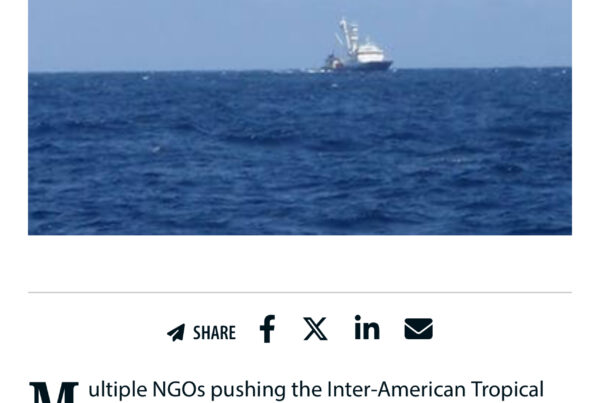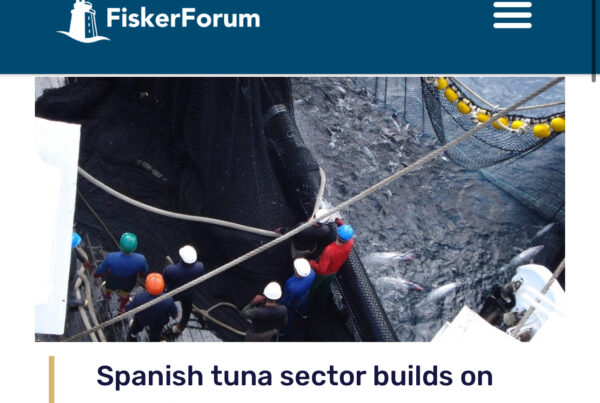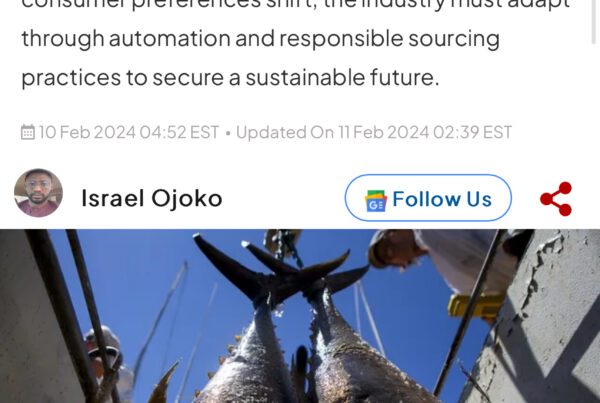NOAA Celebrates Women’s History Month
Celebrate Women’s History Month with us by meeting some of our colleagues across the country and getting a closer look at their many contributions.
Meet Dr. Abigail Reft, National Systematics Laboratory
In honor of Women’s History Month, we’re introducing you to Dr. Abigail Reft, a cnidarian expert and Museum Specialist with NOAA’s National Systematics Laboratory.
Talking with Ann Petersen
To celebrate Women’s History Month, we asked a few of our women scientists to talk about their science journey, what they love most about their job or career, what advice they have for the next generation of women scientists, and more. This week, we spoke with Ann Petersen, a fisheries biologist for the Northeast Fisheries Science Center’s Fisheries Ecology Branch.
Highlights
Fishadelphia: Connecting Communities with Fresh Seafood
On the newest episode of Dive In with NOAA Fisheriespodcast, we talk to Dr. Talia Young, founder and executive director of Fishadelphia, a community-supported fishery that brings fresh, local seafood to economically and culturally diverse communities in Philadelphia. The program was the recipient of a Saltonstall-Kennedy grant, which funds projects around the country that lead to the promotion, development, and marketing of U.S. fisheries.
Request for Comments: NOAA’s Office of Law Enforcement Priorities
NOAA Fisheries recently released the Office of Law Enforcement’s Draft Enforcement Priorities for 2023–2027. These priorities were developed through an extensive stakeholder engagement process. They will help our enforcement team accomplish its mission, guide its strategic planning, and focus the use of law enforcement assets where they are most needed. We invite additional public comments on the document through April 17.
West Coast
NOAA Fisheries Proposes Listing Sunflower Sea Star as Threatened Under Endangered Species Act
One of the largest sea stars in the world, the sunflower sea star, was once common along the Pacific Coast of North America. An expert panel reviewed the best information on the species’ sharp decline and has prompted NOAA Fisheries to propose listing the species as threatened.
Pacific Islands
Reef Assessment and Mapping Mission to the Central Pacific
A young gray seal took an unexpected turn south this winter, visiting Hilton Head and Myrtle Beach, South Carolina, and, finally, St. Augustine, Florida. Partners in NOAA Fisheries’ southeast marine mammal stranding network mobilized to bring the seal pup in for care at the National Aquarium for eventual release to the mid-Atlantic.
Photos: American Samoa/Pacific Remote Islands 2023 Cruise
Follow the NOAA RICHARD (Rainier Integrates Charting, Hydrography, And Reef Demographics) mission as we map the ocean floor and deploy scientists to conduct coral reef assessments around American Samoa and the Pacific Remote Island Areas. Check out this photo gallery for images and a story map of the Reef Assessment and Mapping Mission to the Central Pacific.
New England/Mid-Atlantic
Collaborating with Industry on Greater Atlantic Electronic Reporting
The Greater Atlantic Regional Fisheries Office is now virtually paperless when it comes to reporting and permitting. Getting there took a lot of work—and collaboration—by NOAA and the fishing community. Read on to learn more about the new resources and technology and how it’s all being received.
NOAA Workshops Deliver Teaching Tools to Educators
Winter may mean a pause in outdoor learning experiences for students in the Chesapeake Bay watershed. But building the region’s capability to graduate environmentally literate students from high school doesn’t slow down. The NOAA Environmental Science Training Center has teamed up with experts to offer workshops training educators to use hands-on science in the classroom and in the field.
Science Blog: Conch Fishing—An Observer’s Perspective
Marine snails may not be the first thing you think of when you think about commercial fishing in the Northeast. Fisheries observer Jessica Tyrrell provides an insider’s perspective on a little known yet important fishery. This is the latest from the Field Fresh Blog: Science in Motion series.



